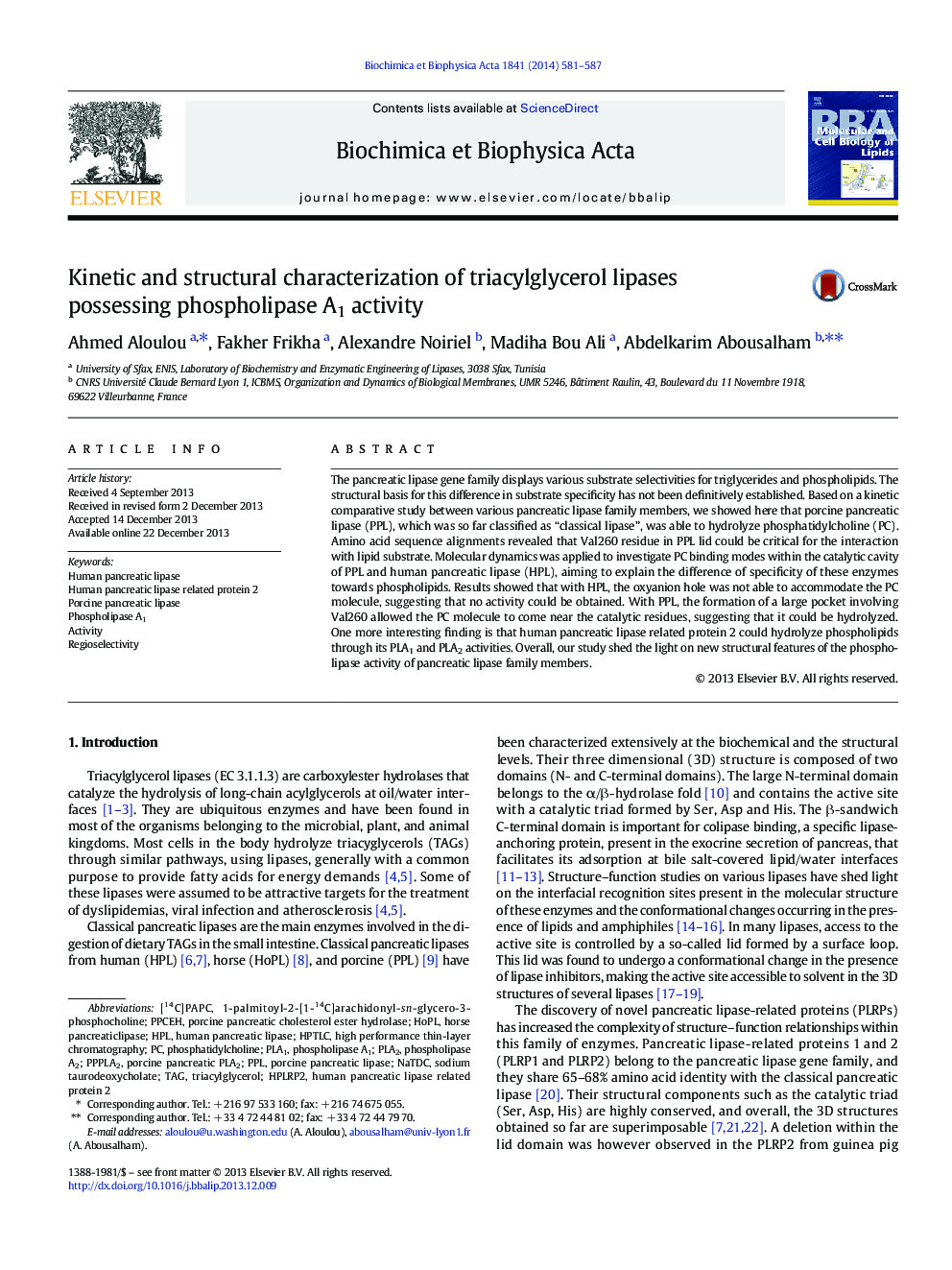| Article ID | Journal | Published Year | Pages | File Type |
|---|---|---|---|---|
| 8302425 | Biochimica et Biophysica Acta (BBA) - Molecular and Cell Biology of Lipids | 2014 | 7 Pages |
Abstract
The pancreatic lipase gene family displays various substrate selectivities for triglycerides and phospholipids. The structural basis for this difference in substrate specificity has not been definitively established. Based on a kinetic comparative study between various pancreatic lipase family members, we showed here that porcine pancreatic lipase (PPL), which was so far classified as “classical lipase”, was able to hydrolyze phosphatidylcholine (PC). Amino acid sequence alignments revealed that Val260 residue in PPL lid could be critical for the interaction with lipid substrate. Molecular dynamics was applied to investigate PC binding modes within the catalytic cavity of PPL and human pancreatic lipase (HPL), aiming to explain the difference of specificity of these enzymes towards phospholipids. Results showed that with HPL, the oxyanion hole was not able to accommodate the PC molecule, suggesting that no activity could be obtained. With PPL, the formation of a large pocket involving Val260 allowed the PC molecule to come near the catalytic residues, suggesting that it could be hydrolyzed. One more interesting finding is that human pancreatic lipase related protein 2 could hydrolyze phospholipids through its PLA1 and PLA2 activities. Overall, our study shed the light on new structural features of the phospholipase activity of pancreatic lipase family members.
Keywords
Related Topics
Life Sciences
Biochemistry, Genetics and Molecular Biology
Biochemistry
Authors
Ahmed Aloulou, Fakher Frikha, Alexandre Noiriel, Madiha Bou Ali, Abdelkarim Abousalham,
